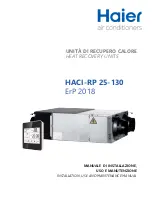
43
10. RA-4/4A Deflection Circuit Troubleshooting
4
Q5013/E
H OUT
D BOARD
FIGURE 10-3 - PIN AMP
FROM
IC512/11
VDSP
PIN E/W
CN5004
R5006
R5010
Q5003
+12V (D)
N
P
R5014
Q5011
P
R5024
C5018
Q5007
R5015
R5025
C5022
R5036
R5037
R5044
C5044
R5052
R5053
P
Q5012
R5041
R5045
R5064
R5060
Q5017
P
D5018
D5012*
R5056
C5031
C5030
Q5018
P
R5065
R5066
P
Q5020
-135V
FROM CN6002/3
*THIS DIODE IS REPLACED
BY A JUMPER IN MOST
SETS
10.3TVP14
5/28/02
Horizontal Deflection Loss
Because this chassis utilizes a separate high voltage circuit, the CRTs must be protected in the case horizontal
deflection is lost. If this situation occurs, the set will be shut down and the timer LED will blink in sequences of
six. Referring to Figure 10-4, the horizontal retrace pulses are monitored by Q5019. After some clipping of the
top and bottom of the spike, it will be amplified by Q5014. As long as horizontal deflection is operating, Q5014
will keep C5020 charged and Q5006 will be on. Loss of the H pulse will cause Q5006 to turn off, sending a high
signal to IC1009 to shut the set down.
Troubleshooting this circuit requires extreme care. Since the unit goes into immediate shutdown, there may be
instances where the protect circuit will need to be overridden in order to dynamically troubleshoot it.
Always
disconnect the C boards from the CRTs when working on this circuit!
Since the circuit has a mute transistor to delay it from activating at turn on (Q5009), the first step is to scope
Q5019-B for the momentary presence of horizontal pulses. This will verify if the horizontal deflection is working
or not and will assist in determining a legitimate sweep failure or a malfunctioning protect circuit.
















































